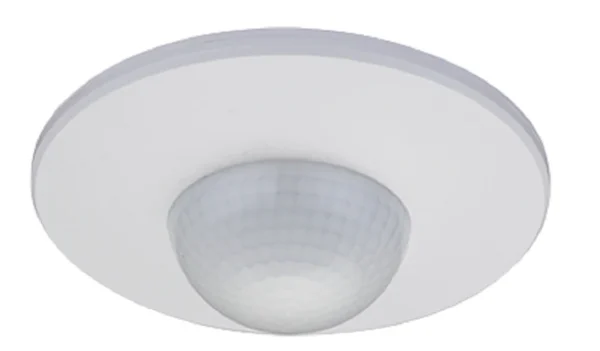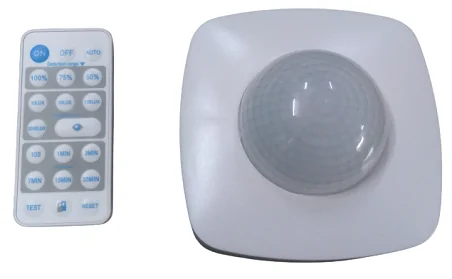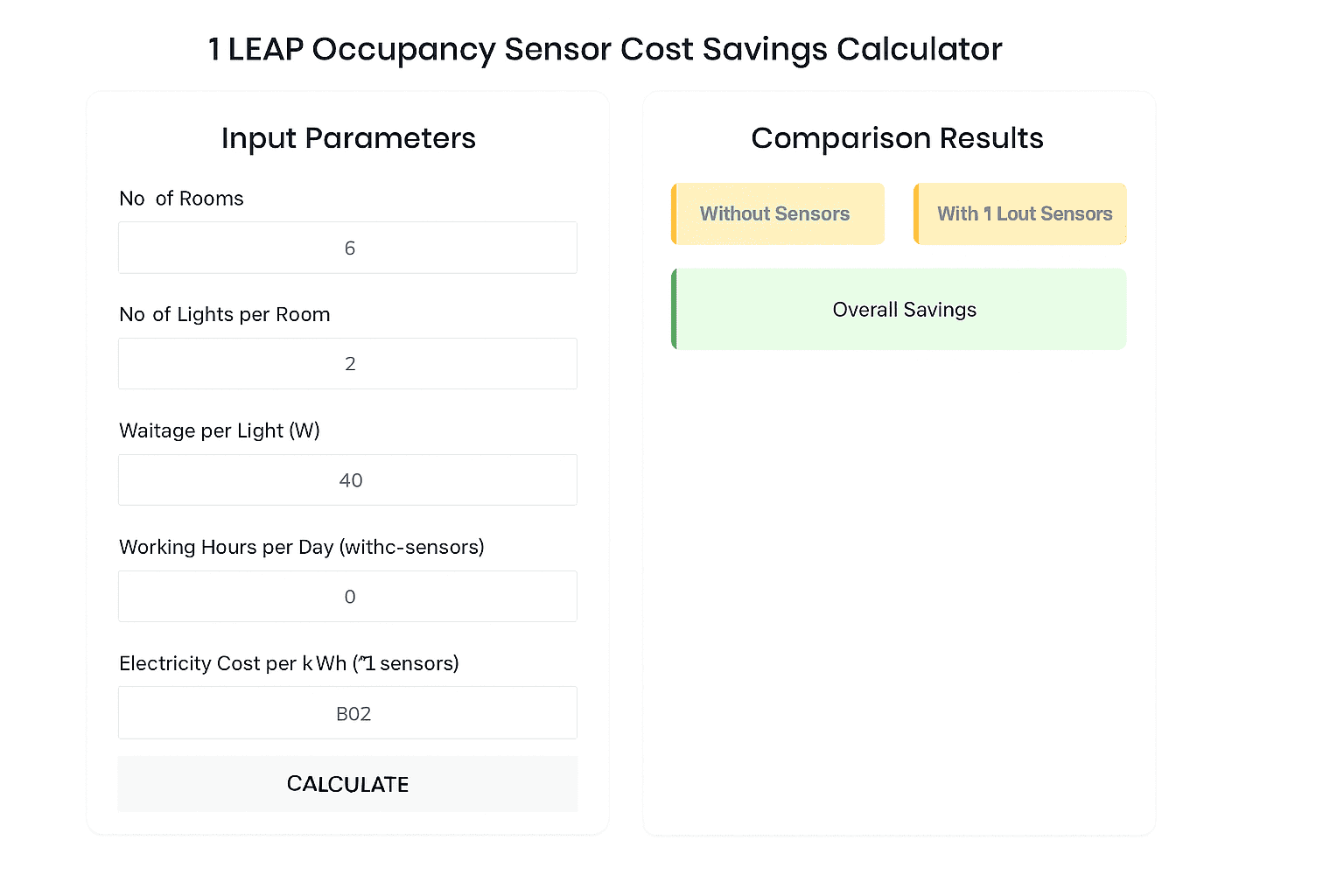High-Quality Occupancy Sensors for Energy-Saving Motion Detection
Occupancy sensors plays an important role in energy-efficient building management, automation systems, and modern lighting control structure. Designed to detect the existence within a defined area and automatically manage connected electrical loads, these sensors have become an important part in industrial plants, commercial buildings, and smart infrastructure projects. They contribute directly to operational efficiency and energy savings while supporting maintainability goals and receptivity requirements. As a leading Ceiling Mount Occupancy Sensor Dealer In Delhi, we lead professionally engineered sensing solutions that meet the expectations of high-performance environments.
Understanding Occupancy Sensors in Professional Applications
An occupancy sensor uses motion or showing detection technology to decide whether an area is being used. When occupants enter a space, the sensor activates lighting or other electrical loads; when the space becomes blank, it switches those loads off after a fix delay. This functionality reduces the energy wastage, increase safety, and reduces manual interference in large and complex facilities.
Industrial users are depend on occupancy sensor for automation reliability, especially in zones where continuous lighting or equipment operation is unnecessary. Commercial buildings benefit through controlled illumination and optimized building operations. The core technologies which 1 LEAP Technologies used to make their occupancy sensor is—PIR, ultrasonic, and dual-technology—are engineered to provide the perfection and stability across different environmental conditions. The decision to choose a particular sensing technology depends on the area layout, level of movement, and sensitivity requirements.

1L-PS041 – 360° Ceiling Mount Occupancy Sensor
The 1L-PS041 – 360° Ceiling Mount Occupancy Sensor is an advanced, fully automatic dual-function controller designed for indoor security and courtesy lighting

1L-PS06 – 360° Ceiling Mount Occupancy Sensor with IR Remote
The 1L-PS06 – 360° Ceiling Mount Occupancy Sensor with IR Remote is a highly efficient and intelligent lighting control solution designed for indoor applications
Types of Occupancy Sensors
Ceiling-Mount Occupancy Sensors
Ceiling-mount sensors provides a 360° coverage pattern and are preferred for spaces requiring uniform detection. They are hugely used in offices, retail zones, open work floors, corridors, reception areas, and warehouse sections. As an official Ceiling Mount Occupancy Sensor Dealer In Delhi, we provide models built for consistency, reduced false activation, and combination with LED lighting, automation controllers, and centralized energy-management systems.
Occupancy Sensors with IR Remote
To meet the programming and maintenance needs of large buildings, many models include IR remote configuration. This feature allows the commissioning team to adjust sensitivity, delay time, and brightness beginning without opening the unit or accessing ceilings. As a trusted Occupancy Sensor with IR Remote Dealer In Delhi, we supply remote-configurable units that clarify setup in malls, commercial towers, schools, hospitals, and industrial facilities.
Key Features Designed for Professional Environments
1 LEAP Technologies made modern industrial-grade occupancy sensors come with ability that support precision, durability, and long-term performance. Adjustable delay timers help align sensor operation with actual workflow patterns. Sensitivity settings allow the sensor to be calibrated for high-traffic or low-traffic areas. Daylight start functions prevent needless lighting activation when natural light is enough. The materials used in professional-grade sensors makes sure he stability against humidity, dust, vibration, and temperature variations.
These features make occupancy sensors suitable for combination with centralized systems used by facility managers, automation integrators, and electrical consultants. Their similarity with a huge range of load types makes sure the smooth performance even in demanding conditions.
Professional Advantages of Using Occupancy Sensors
The adoption of occupancy sensors in industrial and commercial projects provides major benefits. Energy savings form the primary advantage, especially in large facilities where lighting contributes majorly to electricity consumption. Automated switching reduces operational costs, improves equipment life, and helps organizations to achieve maintainability targets.
Automation organization is another high-priority advantage. Spaces such as meeting rooms, washrooms, storage areas, and corridors frequently remain lit due to oversight. These sensors reduces the manual dependency, making sure the building operates predictively and efficiently. For industrial environments, sensors help in maintain the visibility during movement and makes sure the lights automatically turn off when zones are inactive.
The sensors also contribute to safety and Obedience. Automatic radiance increases the visibility in analytical areas, reducing the risk of accidents. Their use supports in making sure an enough lighting management.
Applications Across Industrial and Commercial Segments
Occupancy sensors are highly utilized within:
- Industries such as manufacturing, processing, and warehousing
- Commercial office space, corporate locations, and educational facilities
- Healthcare systems and hospitals, clinics, and diagnostic centers
- Retail and hospitality establishments, including stores, shopping centers, and hotels
- These sectors enjoy the anticipated and dependable automation of occupancy sensors.
The sensors also contribute to safety and Obedience. Automatic radiance increases the visibility in analytical areas, reducing the risk of accidents. Their use supports in making sure an enough lighting management.
Sector - Specific Accurate Operational Functions
Industrial Facilities
Manufacturing settings depends on occupancy sensors to automate lighting within the thoroughfares, storage zones, sub-assembly, and inspection areas. Majorly unused zones derive a plethora of benefits from automated lighting control as it helps to diffuse energy in evenly during non-working hours.
Commercial Buildings
In corporate office and business complex settings, occupancy sensors assist in the superior operational control of the buildings by the integration of lighting in the control of the use of light during the occupancy of the buildings. Meeting rooms, discussion rooms, commons, and restrooms are directed automatically without involvement of people. This enhances a controlled and streamlined environment from the perspective of the facilities team.
Educational Institutions
Occupancy sensors are a common feature in schools, colleges, and other educational facilities in classrooms, auditoriums, laboratories, and administrative buildings. This automation ensures the bio responsible use of energy in large campuses that undergo varying occupancy over the entire day.
Healthcare and Hospitality
Hospitals also utilized motion detectors in hallways, patient care units, utility rooms, and backend service zones. Similarly, hotels and guest facilities use light sensors to keep an even standard of lighting while minimizing costs.
Occupancy Sensors for Small Spaces
Occupancy sensor switches serve a function of a collection of devices whereby manual switch control is integrated with automatic detection. They work well in small rooms, cabins, utility rooms, and in spaces that need to reverse control occasionally. As a trusted Occupancy Sensor Switch Dealer in Delhi, we offer the sensor switches that maintain synchronicity with the modern loads of LED and deliver performance that is flicker and delay free.
Their streamlined interface allow seamless integration into existing electrical systems with no extra cabling needed. They are especially dominant in commercial support zones and small industrial rooms where manual control capability remains operationally essential.
How Occupancy Sensors Contribute to Industrial Automation
Occupancy sensors play a pivotal role in contemporary industry automation by functioning as smart actuators for a building’s control systems. Integrated with building management systems, they provide real-time occupancy data that adjusts lighting, climate control systems, and other specialty devices. The outcome is adequate resource utilization and a building that behaves in a seamless reactive manner.
Occupancy sensors are used by automation engineers in routine automated lighting patterns, zone-based control systems, and intelligent timers. These sensors provide predictable and consistent performance, establishing them as reliable sensing elements in high-end automation systems. Furthermore, the seamless incorporation of these sensors into the Internet of Things and intelligent controllers boosts their worth in advanced infrastructures as building blocks.
Technical Strengths That Define Our Solutions
The sensors provided by us have:
- Accurate sensing without unjustifiable activations
- Compatibility with commercial, industrial and automation grade loads
- Rugged strong housing built to withstand harsh working environments
- These attributes ensure the long-standing reliability of the sensors across different applications.
Why Choose Us For Occupancy Sensors.
Occupancy sensors are our strong hold, where we have developed tailored high-performance sensors for industrial, commercial and automation residential environments. Taking into account our recommendations, we identify the sensing technology based on the area that needs to be covered, placement restrictions, the environment, and level of control. Each sensor in our catalog is a product of extensive selection to ensure reliable consistent performance in practical applications.
Partner With Us for Future-Ready Sensing Solutions
Having built reputation as a prominent Ceiling Mount Occupancy Sensor Dealer in Delhi, and with our specialization as an Occupancy Sensor with IR Remote Dealer in Delhi and Occupancy Sensor Switch Dealer in Delhi, we have developed reliable solutions for painstaking projects, to say the least, in the field of automation and energy management. Our sensors help end users obtain savings on their energy bill, and in turn provides a means of control on the operations of their buildings.
Contact Us For Any Query
For industry satisfactory occupancy sensors, commercial application, or automation use, 1 LEAP Technologies invite you to reach to our team for quick support in the selection of the right models to fit your project and offer exceptional sensors with quality service and support.
We invite you to reach out to us and discover the opportunities available in enhancing your facility with progressive sensing technology designed for long service.

